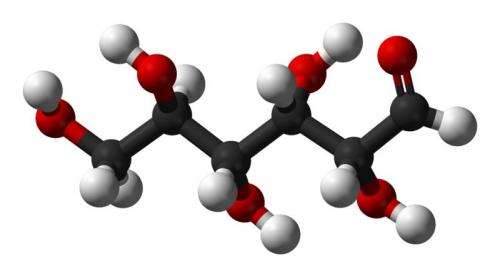Research brings us a step closer to synthetic sugars as medicine

Sugars come in all shapes and sizes. We need them for energy and we enjoy them, but complex variants may also be used as medicine. Chemist Peter Moons from Radboud University has developed these types of sugars. He will defend his thesis on 16 May.
When you think of sugars, you think of sugar cubes or carbohydrates, but sugars are more than just the sweet, tasty stuff. When small sugar molecules are linked together, they form larger, more complex sugar chains with a variety of functions. All the cells in our bodies are littered with these sugar structures. They are essential to our immune system, because this system uses these structures to determine whether a cell belongs to us or is foreign to our body. If the cell is foreign, the immune system can attack it.
Activating the immune system
But some bacteria, viruses and cancer cells also "know" this. They can trick our immune systems by resembling these sugar structures, so that they are left alone.
According to Moons, "Then there are a few options: you can try to create new, synthetic sugars that prevent these sugars from being incorporated into the cancer cells and then become susceptible to the immune system, or you can activate the immune system with certain sugars."
However, these sugar structures are often so complex that they cannot simply be replicated in a laboratory.
Moons says, "Suppose you link two smaller sugars together, then two potentially more complex structures are created, while only one has the function we want. We therefore want complete control over the reaction (selectivity). Until now, we didn't have a clear picture of exactly what happens during such a coupling. We looked into that."
Intermediates
What scientists already knew is that when sugars are coupled this way, temporarily reactive particles are created, called intermediates, which react and produce the final sugar structures, sometimes just the sugar product you were trying to make. You can therefore also use such an intermediate to create the exact complex sugar you want.
"We looked into what happens exactly in couplings with uronic acids and rhamnose, two types of sugars found in humans and bacteria. We proved that these intermediates exist, that they can play a decisive role in a coupling, and we used them to selectively produce a complex sugar. We used NMR, a kind of MRI for molecules, to measure a 'fingerprint' of the intermediates," explains Moons.
By mapping the reaction and everything around it, this knowledge can be used in the future to develop vaccines or medications.
However, we're not there yet, warns the chemist.
"We've also tried to make even larger structures that can be used as an 'immune booster,' but there are still some challenges to overcome. However, our insights are bringing us one step closer to structuring complex sugars in such a way that we can use them for our health."
Provided by Radboud University



















